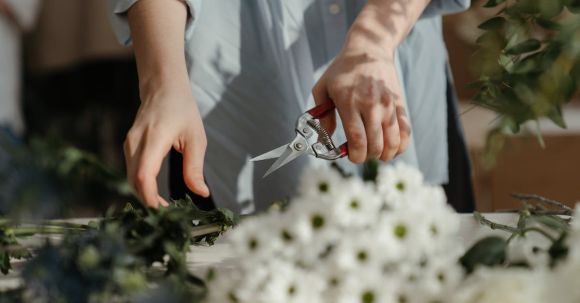Pruning herbs is an essential task that every gardener should master. By regularly pruning your herbs, you can promote their fullness and overall health. However, pruning can be a bit intimidating for beginners. If you’re unsure about how to prune your herbs properly, fear not! In this article, we will guide you through the process step by step, ensuring that your herbs thrive and flourish.
Understanding the Basics of Pruning Herbs
Before we dive into the specifics of pruning, let’s take a moment to understand why it is necessary. Pruning is the act of removing certain parts of a plant, such as leaves, stems, or branches, to encourage healthy growth. When it comes to herbs, pruning is particularly important for maintaining their shape, preventing diseases, and promoting the production of essential oils that give them their aroma and flavor.
Timing is Everything
When it comes to pruning herbs, timing is crucial. The best time to prune your herbs is in the early morning when the plant is at its most hydrated. Avoid pruning during the heat of the day, as this can stress the plant and hinder its recovery. It’s also important to prune your herbs regularly throughout the growing season to ensure continuous growth and prevent them from becoming woody or leggy.
Pinching vs. Cutting
There are two main methods of pruning herbs: pinching and cutting. Pinching involves using your fingers to remove the top portion of the stem, just above a pair of leaves. This method encourages the herb to branch out and become bushier. Cutting, on the other hand, involves using sharp pruning shears to remove larger sections of the plant. This method is typically used to remove dead or diseased parts of the herb.
Pruning Different Types of Herbs
Not all herbs should be pruned in the same way. Different herbs require different pruning techniques to ensure their optimal growth. Here are some general guidelines for pruning common herbs:
1. Basil: Pinch off the top leaves of the basil plant regularly to prevent it from flowering and encourage bushier growth.
2. Rosemary: Trim the tips of the rosemary plant regularly to maintain its shape and prevent it from becoming too woody.
3. Mint: Cut back the mint plant by one-third every four to six weeks to prevent it from spreading and becoming invasive.
4. Thyme: Trim the thyme plant by removing the top portion of the stems to promote bushier growth.
5. Parsley: Cut the outer stems of the parsley plant regularly to encourage new growth from the center.
The Importance of Proper Tools and Techniques
To ensure successful pruning, it’s important to use the right tools and techniques. Use sharp pruning shears or scissors to make clean cuts and minimize damage to the plant. Avoid tearing or ripping the plant, as this can lead to infections and diseases. Additionally, make sure to sanitize your tools between each use to prevent the spread of any potential pathogens.
Incorporating Pruning into Your Herb Care Routine
Now that you know the basics of pruning herbs, it’s time to incorporate this essential task into your herb care routine. Regularly check your herbs for any signs of overgrowth, disease, or pests. Prune accordingly and remember to follow the specific guidelines for each herb type. By making pruning a regular part of your herb care routine, you’ll ensure that your herbs remain healthy, full, and vibrant all season long.
In conclusion, pruning herbs is a simple yet crucial task for any herb gardener. By understanding the basics, timing your pruning correctly, using the appropriate techniques, and incorporating it into your regular care routine, you can ensure that your herbs thrive and flourish. So grab your pruning shears and get ready to give your herbs the TLC they deserve!





